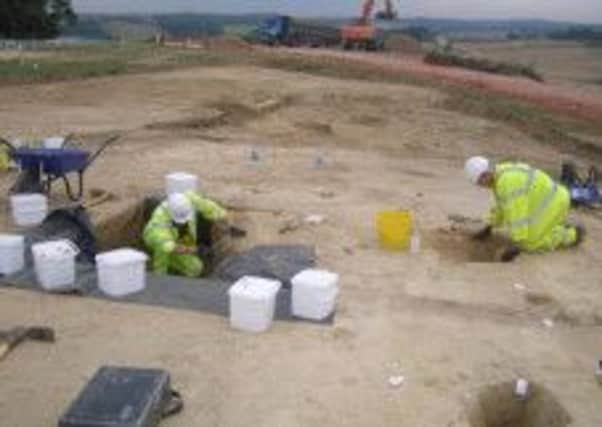Prehistoric remains found on BHLR site


Working alongside Oxford Archaeology, members of the Hastings Area Archaeological Research Group (HAARG) have been involved in the excavation of Mesolithic flint scatters from the site.
This is just one of many finds uncovered since HAARG were given the unique opportunity to join the experts a year ago.
Advertisement
Hide AdAdvertisement
Hide AdLynn Cornwell from HAARG said: “This has been a unique opportunity to add to our knowledge of the area and has been a fantastic way of learning more both about archaeological techniques and about the history of this part of East Sussex.
“It has also given our members the chance to work alongside professional archaeologists and gain experience in enhanced excavation and recording techniques.
“We would like to thank East Sussex County Council and Oxford Archaeology for their support and encouragement.”
John Bothroyd from Oxford Archaeology added: “HAARG volunteers have become valued members of Oxford’s team, with their excellent local knowledge and enthusiasm being most welcome.”
Advertisement
Hide AdAdvertisement
Hide AdAt the eastern end of the link road, near Upper Wilting Farm, the team has uncovered evidence of Early Romano British industry and Saxon Settlement activity.
The main focus of Oxford Archaeology’s work in this area has been the excavation of a large iron working site with up to 17 iron smelting furnaces and evidence of associated activities.
HAARG volunteers helped in the excavation of platforms for ore roasting, an essential part of the iron production process. Members of the HAARG team excavated a near complete cooking pot, which provides valuable evidence to be able to date activity on the site. Evidence of Saxon corn production has also been identified in the form of three unusual corn driers and a suspected barn.
The HAARG team helped excavate the building in severe weather conditions and this led to the successful completion of some very valuable archaeological work.